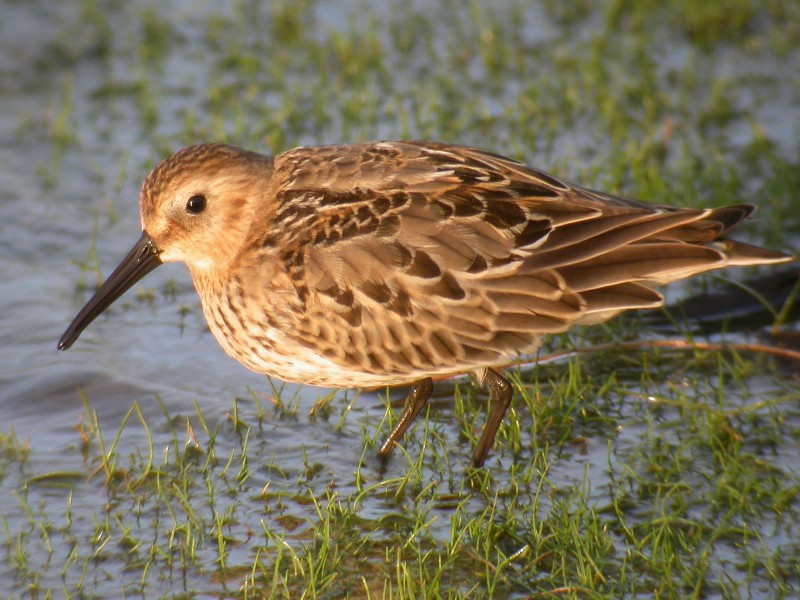Colours
Distinguishing features
An adult Dunlin in breeding plumage shows the distinctive black belly which no other similar-sized wader possesses. The winter Dunlin is basically grey above and white below. Juveniles are brown above with two whitish "V" shapes on the back. They usually have black marks on the flanks or belly and show a strong white wingbar in flight.
The legs and slightly decurved bill are black. There are a number of subspecies differing mainly in the extent of rufous coloration in the breeding plumage and the bill length. It should, however, be noted that bill length varies between sexes, the females having longer bills than the males. (Wikipedia)
Size
- From 17 cm to 21 cm (Length of specimen)
Wingspan
- From 32 cm to 36 cm
Synonyms
Distribution
Distribution and habitat preferences
It is a circumpolar breeder in Arctic or subarctic regions. Birds that breed in northern Europe and Asia are long-distance migrants, wintering south to Africa, southeast Asia and the Middle East. Birds that breed in Alaska and the Canadian Arctic migrate short distances to the Pacific and Atlantic coasts of North America, although those nesting in Northern Alaska overwinter in Asia. Many winter along the Iberian south coast. (Wikipedia)
Diet
It moves along the coastal mudflat beaches it prefers with a characteristic "sewing machine" feeding action, methodically picking small food items. Insects form the main part of its diet on the nesting grounds; it eats mollusks, worms and crustaceans in coastal areas. (Wikipedia)
Web resources
References
- Simpson, K., N. Day and P. Trusler (2004). Field Guide to Birds of Australia: 7th Edition Penguin Group (Australia), Camberwell, Victoria.



